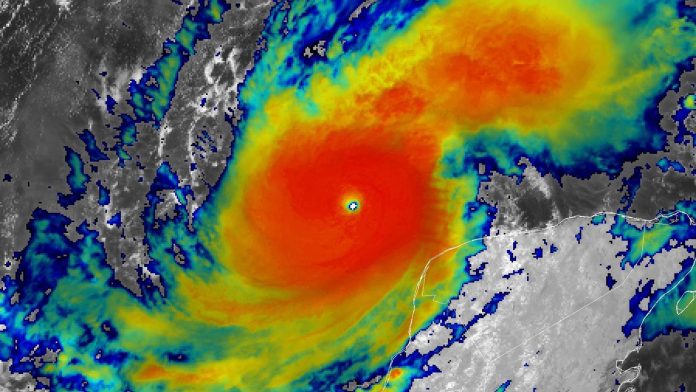[Haz clic aquí para leer en español]
Once again, an unusually active Atlantic hurricane season is likely in 2025, according to the forecast released by the Colorado State University hurricane forecasting team on April 3. The team predicts 17 named storms, nine hurricanes, four major hurricanes, and an ACE of 155 (26% above average). These numbers are higher than the long-term averages for the period 1991-2020. Last year, there were 18 named storms, 11 hurricanes, five major hurricanes, and an ACE of 162. Over the past decade, only two Atlantic seasons have ended up with ACE significantly below the 1991-2020 average: 2022 and 2015.
The CSU outlook also predicts higher odds of a major hurricane hitting the U.S. coast than usual. The forecast gives a 51% chance for a major hurricane to hit the U.S. (long-term average: 43%), a 26% chance for the East Coast or Florida Peninsula (long-term average: 21%), a 33% chance for the Gulf Coast (long-term average: 27%), and a 56% chance for the Caribbean (long-term average: 47%).
The CSU forecast is based on a statistical model using more than 40 years of past Atlantic hurricane statistics, along with dynamical model output from four groups: ECMWF (European model), UKMET, Japan Meteorological Agency, and Centro Euro-Mediterraneo sui Cambiamenti Climatici (CMCC).

The CSU team provided two main reasons for their above-average 2025 forecast:
1) ENSO-neutral or weak La Niña conditions
La Niña conditions in the Eastern Pacific have been weak recently, and most models are forecasting neutral or weak La Niña conditions for the peak of the Atlantic hurricane season. NOAA predicts a 49% chance of neutral conditions, a 38% chance of La Niña, and a 13% chance of El Niño for the peak of the season.
2) Ocean temperature patterns
Current sea surface temperatures are warmer than average in the western and central Atlantic and eastern subtropical Atlantic, while they are near to slightly below average in the eastern tropical Atlantic. This enhanced warmth correlates well with what is typically seen in April before active Atlantic hurricane seasons.
The CSU team also included a standard disclaimer: “Coastal residents are reminded that it only takes one hurricane making landfall to make it an active season for them. Thorough preparations should be made for every season, regardless of how much activity is predicted.”
Analog years
Five years with similar preseason January, February, and March conditions were selected as “analog” years that the 2025 hurricane season may resemble. These analog years occurred the second year after an El Niño event and had La Niña conditions during January-February of their current year. They also had above-average sea surface temperatures in the tropical and subtropical Atlantic. The analog years were: 1996, 1999, 2006, 2008, 2011, and 2017. The average activity for these years was above average, with 2017 being particularly notable.
A caveat: April hurricane season forecasts
April forecasts of hurricane season activity have historically shown little to no “skill.” This is due to the rapid changes in El Niño/La Niña conditions during this time of year. While CSU predicted an active season for 2024, their forecasts for 2023 and 2022 did not fare as well.
Upcoming forecasts to look out for include: NOAA’s first seasonal hurricane forecast for 2025 in late May, and the next forecast from Tropical Storm Risk, Inc. on April 7.
Read: How to make an evacuation plan
Bob Henson contributed to this post.






